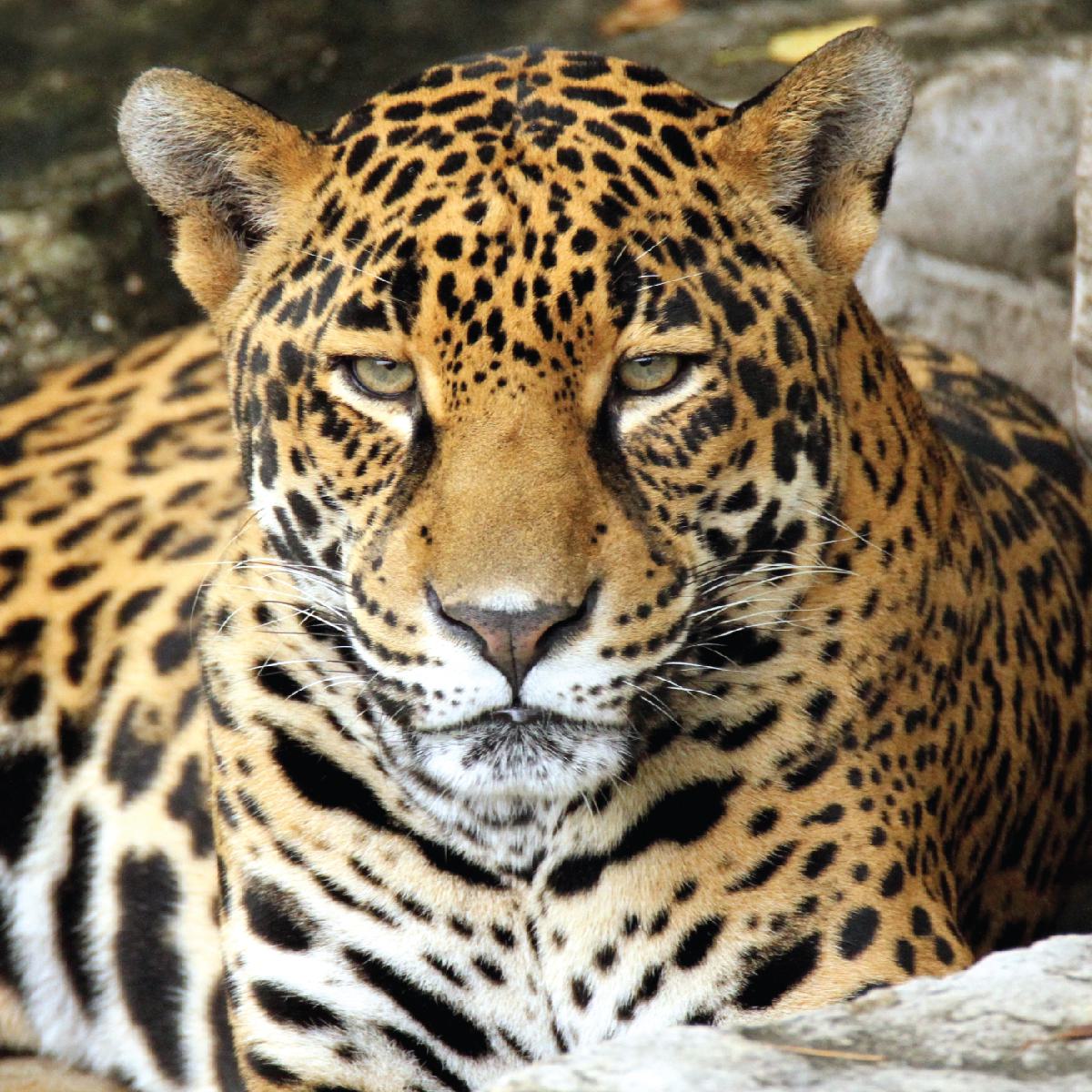
Jaguar
Panthera onca
Did you know?
- Jaguars are a part of the Felidae family, which they share with other cats.
- They live in a variety of habitats, including tropical forests and grasslands, in Mexico, Central America, and South America.
- They are the only big cat species endemic to the New World.
- They often swim and are comfortable around water.
- A female can have between one to four cubs per litter.
Adaptations
Jaguars are the largest of the New World cats; of all of the big cats, only the lion and tiger are larger. Males are usually larger than females and may weigh as much as 250 pounds (about 113 kilograms). Jaguars are equal to leopards in height and length, but are much more powerfully built. Their exceptional size and strength help them thrive as top predators in their ecosystems. They have large paws, which help them swim and climb easily. Like many cats, they have an eye adaptation that allows them to mirror light back into their retinas, giving them amazing night vision. Their coat provides them with excellent camouflage. It ranges from yellow to orange with black spots set in black rosettes, however their coat ranges and there are even completely black jaguars.
Young and Family
The jaguar is a solitary animal. The male and female stay together for a few weeks while breeding. Adults are usually sexually mature by three years of age. A mother will have a litter of one to four cubs after a gestation period of around 100 days. The cubs are born in a secure den in dense vegetation, among rocks or in a hole in a riverbank. The male plays no part in raising the cubs, while the female is aggressively protective of them. The young stay with their mother for about two years, after which they become independent and she is then receptive to breed again. Male cubs grow faster than female cubs.
Threat Level
- Unknown
- Common
- Near Threatened
- Threatened
- Endangered
- Critically Endangered
- Extinct in the Wild
Near Threatened
The Jaguar is likely to qualify for threatened category in the near future, perhaps very quickly depending on local development projects such as rainforest logging.
Range
Mexico, Central and South America
Habitat
Tropical forests, swamps, grasslands, deserts

We care about Jaguars
Jaguars suffer from habitat destruction and hunting. The Saint Louis Zoo participates in the Species Survival Plan for jaguars, a cooperative breeding program that helps ensure a healthy population of animals. We also support this species in Big Cat Country at the Zoo. Learn more about our conservation efforts.
Find this animal in Red Rocks

SAINT LOUIS ZOO ZONE
Red Rocks
At Red Rocks, you’ll view some of the world’s most powerful predators living near some of the world’s most graceful prey. Lions, tigers, zebra and giraffes all share the natural rocky boulders and outcroppings as their territory. With shading trees and a bird or two among the mammals, Red Rocks is a great place to spend a day at the Saint Louis Zoo.

